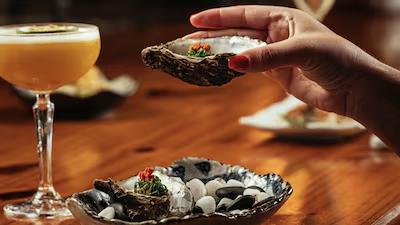
Japanese restaurant Netsu's 10-course Hands-On menu includes Japanese delicacies meant to be eaten directly by hand. Photo: Netsu
Japanese restaurant Netsu's 10-course Hands-On menu includes Japanese delicacies meant to be eaten directly by hand. Photo: Netsu
Eating with hands can aid digestion, improve taste and redefine dining, says Dubai chef
Ross Shonhan has launched a 10-course menu that eschews cutlery at his fine-dining Japanese restaurant Netsu
